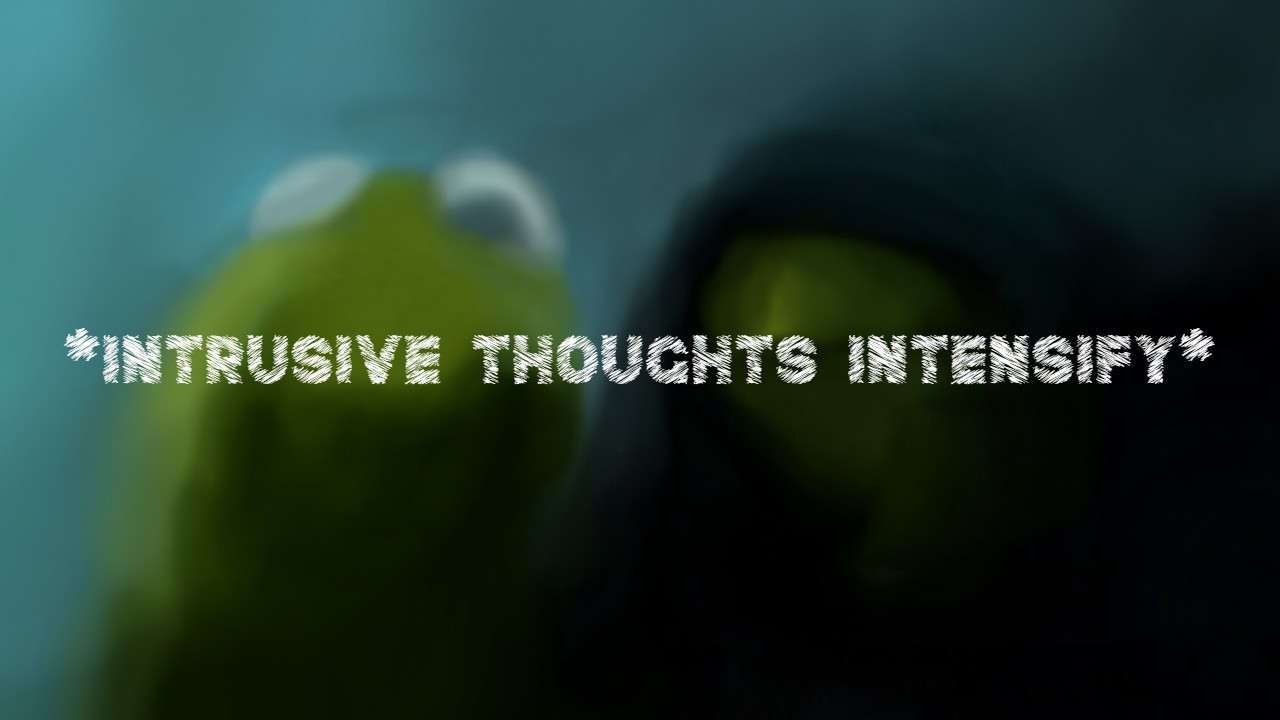ADHD is a neurodevelopmental condition that's characterized by hyperactivity, impulsivity, and difficulty focusing attention. ADHDers—people with ADHD—can also experience intrusive thoughts that are repetitive, distressing, or just flat-out strange.1
It's not uncommon to have intrusive thoughts, but frequently experiencing them may be a symptom of your ADHD (if you have ADHD) or possibly something else.2
Too long; didn't read
- It's normal to experience intrusive thoughts on occasion.
- Frequent and overwhelming intrusive thoughts are common in people with ADHD, OCD, and autism.
- Acknowledging thoughts and then releasing them can help decrease their strength and frequency.
ADHD and your brain
ADHD impacts cognitive, behavioral, and motivational brain functions, often referred to as 'executive dysfunction'.
Executive dysfunction is thought to be caused by a slower development of neurons, which decreases information processing speed in the areas of the brain that regulate behavior, focus, and reward.3
ADHD brain structure affects decision-making, working memory, and reasoning, specifically in the prefrontal cortex. Difficulty in these areas can open the door to persistent intrusive thoughts.4
Which ADHD comorbidities are also related to intrusive thoughts?
Comorbid conditions are conditions that co-occur in one person. For example, depression and autism are two of the most common comorbidities of ADHD.
The ADHD comorbidities listed below can be caused by repetitive, intrusive thoughts or - like in the case of OCD - intrusive thoughts may be a primary symptom of the condition. In addition, recurring negative intrusive thoughts may also further the risk of comorbidities.
1. Anxiety
Anxiety is excessive worry about everyday situations. For example, a parent may have intrusive thoughts about their child's well-being, increasing their anxiety.5
Intrusive thoughts can trigger anxiety, causing someone to obsess over their ideas, which can lead to a deterioration of emotional and physical health over time.
2. Bipolar disorder
Bipolar disorder is a common comorbidity of ADHD. People with bipolar disorder experience extreme shifts in mood from low depressive episodes to manic episodes.
Disordered thinking is a common symptom of BD. Intrusive thoughts may cause harmful behaviors and intense emotions. For example, intrusive thoughts about self-harm can lead to suicide attempts.6
3. Depression
Also sometimes referred to as MDD, or major depressive disorder, depression is a common comorbidity of ADHD. It's characterized by a chronic low mood, including the loss of interest in daily life and persistent sadness.
For example, struggling to fulfill tasks may trigger depression, and negative intrusive thoughts can worsen depression if they center on past mistakes or worries about the future.
4. Autism spectrum disorder (ASD)
Autism and ADHD frequently co-occur. People on the autism spectrum often display symptoms of ADHD, such as difficulty with organizing thoughts, impulse control, and focusing.
Stimming (self-stimulatory behavior) is the repetition of movements or noises, a typical behavior for autists. Stimming can be a self-soothing technique to manage emotions, reduce pain, or respond to over or under-stimulation.
Intrusive thoughts that lead to negative feelings or overstimulation may produce stimming in an individual with ADHD and autism.7
5. Body dysmorphic disorder (BDD)
People with BDD believe their body looks different than it really does. This may cause depression or avoidance of social interactions. Intrusive thoughts related to BDD increase a person's belief that their body is flawed. Consequently, obsessive-compulsive body behaviors can arise, such as avoiding photos or repeatedly criticizing or 'adjusting' their body in a mirror.8
6. Obsessive-compulsive disorder (OCD)
Like ADHD, those with OCD may suffer from recurrent intrusive thoughts.9 Some of these are disturbing. In contrast, other obsessions focus on a worry that can only be soothed with a particular behavior - a compulsion.
Uncontrollable thoughts can trigger obsessive-compulsive behavior, e.g., intrusive thoughts about germs may result in an individual obsessing over cleanliness and hygiene.
7. Post-traumatic stress disorder (PTSD)
PTSD commonly occurs after an individual goes through a traumatic event, such as an accident, assault, natural disaster, or combat. PTSD can lead to flashbacks, in which an individual "relives" the traumatic moment in a way, eliciting negative emotional responses.
ADHDers may also have an increased risk of developing PTSD.
Researchers believe the unique neural connections in the ADHD brain may lead to dysfunctional activation of the "fear" structures and may predispose an individual to PTSD after a traumatic incident.
In addition, intrusive thoughts relating to the experience could trigger a flashback.
8. Borderline personality disorder (BPD)
People with borderline personality disorder often experience a range of cognitive distortions that can affect their way of thinking, their beliefs, and even their actions. Dichotomous thinking—'black-and-white thinking'—and paranoia are two examples of BPD thought patterns that can become intrusive.
How to stop intrusive thoughts with ADHD
Dwelling on intrusive thoughts and trying to banish or avoid them only helps to reinforce them. Instead, acknowledging thoughts and leaving them alone can help decrease their frequency and strength. (Psst! If you're looking for a more in-depth look at managing emotions and thoughts, check out the R.A.I.N. method!)
Here are some steps to deal with intrusive thoughts right now:
- Allow intrusive thoughts into your mind.
- Acknowledge and label them as "intrusive thoughts."
- Recognize that you don't control them; they are automatic. (In other words, you are not your thoughts!!)
- Let the thought float away. Don't fight or dwell on it. Don't judge yourself. Simply pause... and then let it pass.
- Accept that the thought may come back again. (And that's okay! It doesn't define you as a human being!)
- Continue with whatever you were doing before the thought occurred.
You are not your intrusive thoughts. Sometimes they're scary, yes. And sometimes they can make you question yourself and your own intentions.
But the reality is that thoughts are just random, electric connections being made in your brain—nothing more, nothing less.









